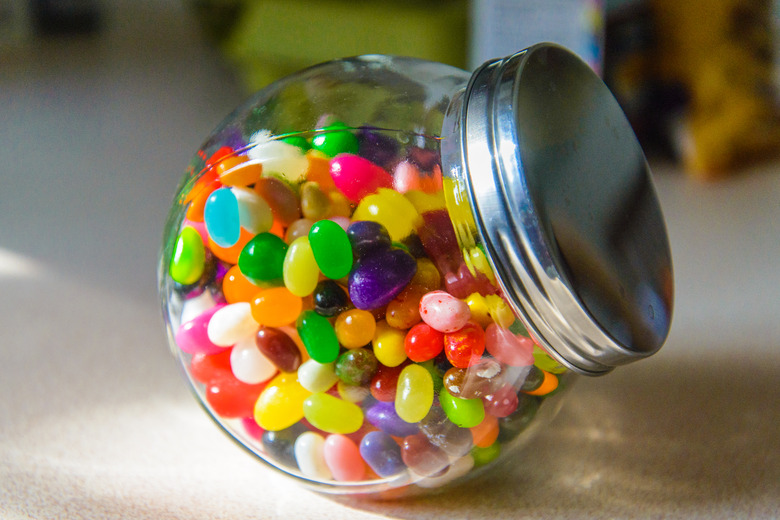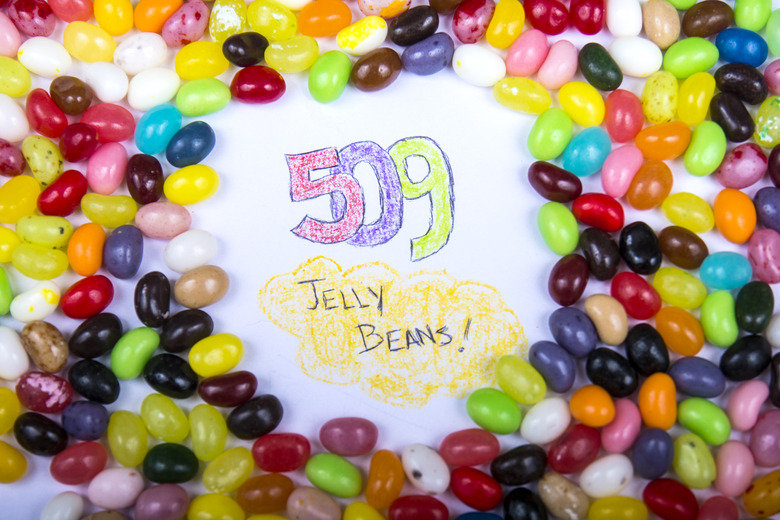How To Count Jelly Beans In A Jar
You're trying to guess closest to the number of jelly beans in a jar. You aren't allowed to take them out and count them, so you need to be tricky. The best you can do is to estimate. You can do this by assuming that the jelly beans are fairly evenly distributed within the jar, and employing some basic geometry. First the height and circumference of the jar must be determined, using jelly beans as the unit of measurement. The volume of the jelly beans can then be calculated using a mathematical formula.
Bean Counting
Step 1
Count the number of jelly beans that intersect with a line stretching from the top of the jar to the bottom. To make the line, you can stretch a piece of string, lay down a piece of tape or hold up a strip of paper. Count every jelly bean that the line crosses. This is the height of the jar in jelly beans.
Step 2
Count the number of jelly beans that intersect with a line that goes around the jar. Use the same method as above. If you can't reach all the way around the jar, go half way around and multiply by 2. This is the circumference of the jar in jelly beans.
Step 3
Calculate the volume of the jar in jelly beans using the following formula:
\(\text{volume}=\frac{(\text{circumference})^2\times \text{ height}}{4\pi}\)
Step 4
Round to the nearest jelly bean unless you think there might be broken pieces in the jar.
Things Needed
- Strips of paper
- Tape
- String
- Calculator
Beans in a Box
You can use the same technique to calculate the number of jellybeans in a see-through rectangular or square box. To calculate the volume of the box, use this formula: Volume = length of box x width of box. If the jellybeans happen to be in a spherical container, calculate the volume of the container using this formula:
\(\text{volume}=\frac{4}{3}\pi 4^3\)
where r is the radius of the sphere.
Cite This Article
MLA
Ph.D., Ariel Balter,. "How To Count Jelly Beans In A Jar" sciencing.com, https://www.sciencing.com/count-jelly-beans-jar-4913844/. 5 December 2020.
APA
Ph.D., Ariel Balter,. (2020, December 5). How To Count Jelly Beans In A Jar. sciencing.com. Retrieved from https://www.sciencing.com/count-jelly-beans-jar-4913844/
Chicago
Ph.D., Ariel Balter,. How To Count Jelly Beans In A Jar last modified August 30, 2022. https://www.sciencing.com/count-jelly-beans-jar-4913844/



